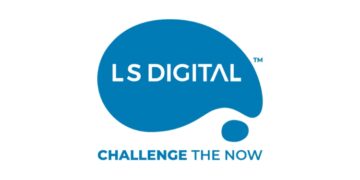In recent years, the fusion of technology and healthcare has spurred a new wave of innovation, commonly known as Health Tech. From wearable devices that monitor heart rates to telemedicine apps connecting patients with doctors at the click of a button, Health Tech has fundamentally transformed the way we think about and engage with healthcare. But as the sector grows and evolves, so too does the need for thoughtful, purpose-driven marketing.
In a field as sensitive and personal as healthcare, marketing is not just about brand awareness or selling products—it’s about building trust, educating the public, and offering genuine solutions to real problems. At the intersection of Health Tech and marketing, crafting campaigns with a purpose isn’t just a strategic approach; it’s a moral imperative. Marketers can leverage this intersection to not only drive business results but also positively impact lives.
The Health Tech Revolution: Changing the Narrative
Today, people are empowered to take control of their health through tools that were once unimaginable. From smartphone apps that track daily steps and caloric intake to AI-powered diagnostic tools that detect diseases at early stages, we are experiencing a seismic shift in healthcare delivery.
With this technological boom, there comes a need for marketing campaigns that do more than simply highlight product features. Consumers are not just looking for gadgets or services; they want solutions that enhance their quality of life, provide peace of mind, and offer reliable, science-backed results.
Crafting Campaigns with a Purpose: Start with Empathy
One of the most crucial aspects of marketing in the Health Tech space is empathy. When your audience is dealing with something as personal as their health, they need to know that you understand their struggles, frustrations, and hopes. This means crafting campaigns that aren’t just transactional, but deeply human.
Take, for example, Fitbit’s marketing strategy. The company doesn’t just focus on selling a wearable device that tracks steps or sleep. Its crafts stories around the journeys of individuals who have used Fitbit to improve their lives—whether that’s losing weight, managing a chronic illness, or simply feeling more energized each day.
Empathy also extends to understanding the pain points of healthcare providers. Marketing messages should reflect how these innovations can make a real difference in healthcare delivery, streamlining workflows, improving accuracy, and ultimately allowing for better patient outcomes.
Education Over Promotion: Empowering Through Knowledge
The average consumer may not understand the intricacies of AI-driven diagnostic tools or how a telemedicine platform ensures secure and reliable connections between patients and providers. This is where education becomes a key component of Health Tech marketing.
An educated customer is an empowered customer. Health Tech companies have a responsibility to not just sell products but also educate their audience about how these products work, the benefits they offer, and why they’re needed. Consider telemedicine during the pandemic—many people were unfamiliar with the concept at the beginning, but through effective education-driven campaigns, patients learned how to access care remotely, which provided them with essential health services during a time of global uncertainty.
Video tutorials, webinars, infographics, and detailed blogs are excellent ways to explain complicated processes in an accessible way. This not only builds trust but also positions the company as a thought leader in the space—someone not just selling a product, but someone offering expertise.
Purpose-Driven Storytelling: It’s About the Journey, Not Just the Destination
Purpose-driven storytelling can make a powerful impact in Health Tech marketing. But what does that mean exactly? It’s about showcasing the journey that both the brand and the customer are on.
Let’s say you’re marketing a new Health Tech app designed to monitor glucose levels for diabetics. Instead of focusing solely on the technical specifications of the app—like how frequently it updates, or the real-time notifications—it’s more compelling to share stories about how the app has transformed users’ lives.
Campaigns that center on real stories connect with people on a deeper level. It’s not just about selling a product; it’s about sharing experiences that resonate with others who may be going through similar situations.
Collaborate with Healthcare Professionals
Partnering with respected healthcare professionals can lend credibility to health tech marketing campaigns. These collaborations can take various forms, from expert endorsements to educational content creation.
A mental health app, for example, could team up with psychologists to create a series of articles or webinars on stress management techniques. This not only provides valuable content for users but also positions the app as a scientifically backed tool in mental health care.
The Role of Data: Using Insights Responsibly
Health Tech marketing is unique in that it often involves dealing with large amounts of personal health data. This is both a blessing and a responsibility. Data can be an incredibly powerful tool to personalize marketing efforts, delivering targeted messages to the right people at the right time. But with great power comes great responsibility, and in healthcare, privacy concerns are paramount.
Successful Health Tech marketers use data not just to push products, but to genuinely improve the customer experience. For example, predictive analytics can help marketers identify when a patient might benefit from a particular service, offering timely solutions that feel helpful rather than invasive.
Campaigns should be clear about privacy measures, reassuring users that their health information is safe and will only be used to enhance their experience, not to exploit them.
Social Media: The Modern-Day Word of Mouth
Social media platforms provide an invaluable space for Health Tech companies to engage with their audience in real-time. It’s not just about broadcasting messages; it’s about building communities. Patients share stories, ask questions, and seek advice, creating a dynamic environment where brands can interact on a personal level.
For example, using Instagram or YouTube to post user-generated content allows real people to share their experiences with Health Tech products. It creates an authentic connection, fostering trust in a way that traditional advertising often cannot. By actively engaging with followers, answering questions, and addressing concerns, Health Tech brands can build a loyal customer base that feels supported and valued.
Conclusion: Purpose as the Guiding Star
At the intersection of Health Tech and marketing lies a unique opportunity—to create campaigns that don’t just sell products but truly serve a purpose. By crafting campaigns with a clear purpose – to educate, empower, and improve lives – marketers can transcend traditional promotional tactics and contribute meaningfully to public health discourse.
As we move forward, the most successful health tech marketing campaigns will be those that strike a balance between showcasing innovation and addressing genuine health needs. They will be campaigns that not only drive product adoption but also foster a deeper understanding of health and wellness among consumers.
As marketers, we have the opportunity – and the responsibility – to craft campaigns that inform, inspire, and ultimately improve the health of our communities. That’s marketing with a true purpose.















